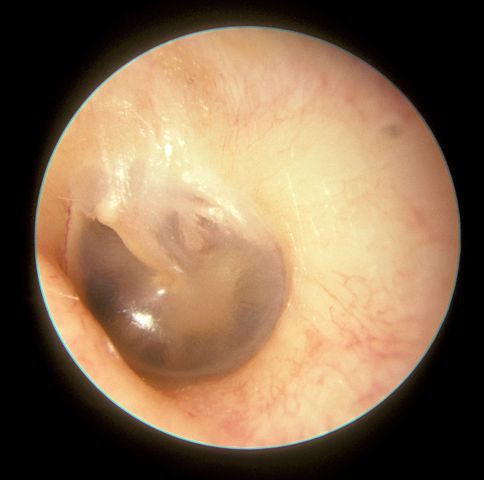
Managing Middle Ear Fluid
Most people are aware that middle ear infections are very common in young children. Many pediatrician visits result in treatment for otitis media, which, in children, often presents as “glue ear” and may be accompanied by pain, fever and reduced hearing. Children are known to be more prone to this condition due to their more horizontal Eustachian tubes and propensity for harvesting infections in general. Pain may increase until the eardrum ruptures from fluid pressure. Over 5 million cases of acute Otitis Media are reported annually in the US.
Adults can find themselves with middle ear fluid as well. This may or may not be associated with an infection. Patients often report their primary physician suspected “fluid in the ears”. Often the fluid trapped behind adults’ eardrums is serious and is typically painless. This may be the result of Eustachian tube dysfunction, in which the middle ear space cannot drain to the throat adequately, often due to congestion in the tube itself. The tympanic membrane (eardrum) is drawn backwards from negative pressure, and yellow watery fluid may be present, having been drawn from the tissues lining the middle ear cavity.
Symptoms most seen in adults include drainage, ear pain, recent decrease in hearing, ear fullness sensations, recent dizziness or balance difficulty, fever (if there is an infection), and even pain, especially in children. It should be correctly diagnosed and treated swiftly.
The Middle Ear & Eustachian Tube
The middle ear refers to the space behind the eardrum. It is an air space that houses the ossicles, or the three tiny bones that transmit sound energy into the inner ear. It is connected to the throat by way of the Eustachian tube, which opens and closes to ensure the air pressure is the same on either side of the drum. When our ears “pop” at altitude, we are feeling the tube open and hearing the result of improved ear drum vibration. Normally the Eustachian tube is under our control, however, when congested, the middle ear space becomes a vacuum. The eardrum is pulled backwards and cannot vibrate easily. Hearing suffers, and fluid can be drawn from the tissues lining the space.
In adults the fluid is clear and watery and not typically infected. Often the tube can be decongested, and the fluid can drain towards the throat. In chronic cases tubes may be inserted through the ear drum for relief.

A Normal Left Eardrum By Michael Hawke MD - Own work, CC BY-SA 4.0, Link

A subtotal perforation of the right tympanic membrane resulting from a previous severe otitis media By Michael Hawke MD - Own work, CC BY-SA 4.0, Link

Infections in Children
In children an infection is more common. According to the National Institutes of Health, otitis media is the leading cause for physician visits and antibiotic use for children five years old and younger. Three out of four children can expect to have at least one episode by age three. Two major risk factors include smoking among family members and spending time in day care centers.
There can be a milky white fluid in the middle ear space (“glue ear”) than can cause intense pain and even rupture the drum. Foul smelling drainage is a sign of a middle ear infection. Children’s Eustachian tubes are more horizontal and do not drain easily. This may require medical treatment. Tubes may be inserted in chronic cases and are very common.
Middle ear fluid or infection in young children can disrupt learning at this critical age for language learning. Key symptoms include sudden reduction in hearing, ear pain and often drainage. It does not need to be a lasting problem. We have tests and cameras that can verify middle ear fluid and guide treatment in a timely manner.

Risk Factors & Relief
Adult risk factors for this condition include GE reflux, smoking, allergies, upper respiratory infections, immune system suppression (as with diabetes, chemotherapy, HIV/AIDS), sinusitis, enlarged tonsils/adenoids, ruptured eardrum and family history.
If you suspect fluid and/or an infection in your ear(s), they should be examined medically. Ideally an otoscopic/microscopic examination of the canals and eardrums, tympanograms and pure tone audiogram (hearing test) can verify or rule out fluid, therefore a visit to an audiologist prior to a medical exam can aid the physician in the diagnosis. Medical or surgical management of the ear is best treated by an otologist or otolaryngologist, or “Ear, Nose and Throat” physician.
Treatment options include antibiotics, analgesics, antipyretics, as well as supplements such as Vitamin C, Zinc and Echinacea. Chronic, recurrent Otitis Media may be treated by insertion of ventilation tubes (through the tympanic membrane) for drainage and pressure equalization.
Do not wait if you or your physician suspect fluid in your middle ears. A thorough diagnostic ear exam is the first step toward appropriate treatment and relief.

